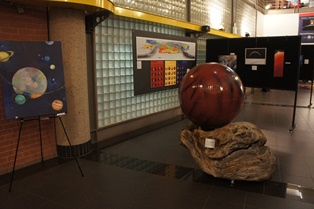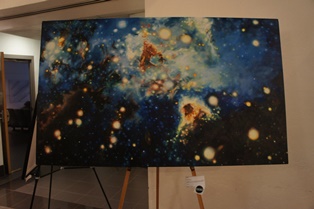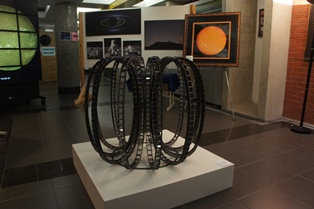The Art of Planetary Science
The Art Of Planetary Science: An Exhibition – bringing together the art and science communities to engage the public.
by Jamie Molaro
On December 4, 2013, the University of Arizona’s Lunar and Planetary Laboratory (LPL) presented The Art of Planetary Science: An Exhibition (TAPS). This was a one night art exhibition and competition displaying works of art inspired by planetary science, alongside works created from scientific data. The goal of the event was to build community between the local art and science communities of Tucson, and to engage the public together in celebration of the beauty and elegance of the universe. The event was conceived of and organized by LPL graduate students Jamie Molaro and James Keane, with the assistance of Maria Schuchardt and other graduate student volunteers, as a voluntary outreach project.
The public often sees science as dull and boring. In reality, science is full of beauty, and the practice of creating scientific knowledge requires an enormous amount of creativity. The goal of the event was to give scientists the opportunity to show this to the public, by creating art out of science and their scientific data. These works utilized, equations, simulations, visual representations of spacecraft data, and images of extra-terrestrial rock and dust samples. Viewing these works of art alongside more traditional artwork inspired by those same scientific ideas provided the audience with a more complex, multifaceted view of the content that would not be possible viewing either alone.
Artists and scientists of all types and levels participated in the exhibition. Having a wide range of ability represented in the art, from professional to amateur, emphasized the community values, collaboration, and engagement that was central to the goals of the exhibition. Works were submitted by prominent local artists with galleries, art students, scientists and science students, amateur astronomers, and art hobbyists. While most participants were local artists and scientists, submissions were received from Northern Arizona, New Mexico, Texas, and even the UK. A wide range of mediums was also represented, including paintings, drawings, photographs, digital images, film, poetry, sculpture, textiles, and glasswork.
One powerful aspect of the event was the ability to reach out to many sectors of the community. The winners of the TAPS competition, as well as a dozen additional selected works, were featured at Craft Tucson and the Tucson Museum of Art’s Art on Tap: Art, Music, and Beer Fest the following weekend. This provided LPL and the TMA an opportunity to work together in engaging the public in art and science through cross promotion, and provided participating artists more than one opportunity to display their work. Prizes for the TAPS competition were sourced from local businesses such as art and book stores, as well as from private donors. This allowed these businesses and the contributing artists to actually participate in and collaborate with LPL in public engagement, which broadened the reach of the event beyond traditional attendance.
The inaugural TAPS exhibition was extremely successful, displaying over 150 works of art, from more than 70 artists and scientists, and drawing an audience of more than 300 art and science enthusiasts. The response from the art community was overwhelmingly positive. Many artists expressed their enthusiasm for exploring planetary science and astronomy as a theme, getting the chance to interact with and meet scientists, and having an additional venue (and audience) in which to display their work. The scientists who participated were equally as interested in seeing local art, meeting artists, and promoting the beauty of science.
The team has plans for a second Art of Planetary Science exhibition this fall, with the hopes that it can become an annual event. They expect this year to be even bigger and better than last! Pictures and details of last year’s event are at www.lpl.arizona.edu/art/2013.
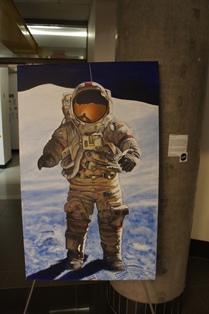 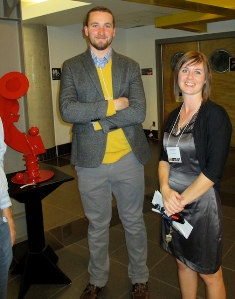  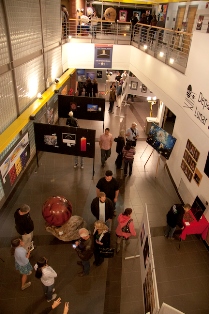 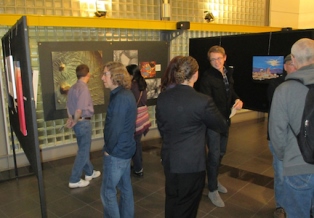 |
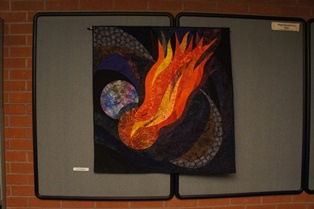 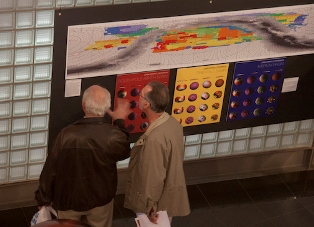 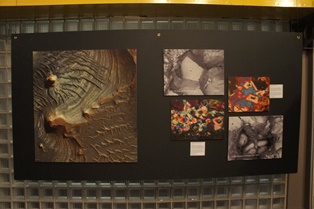
|
|


